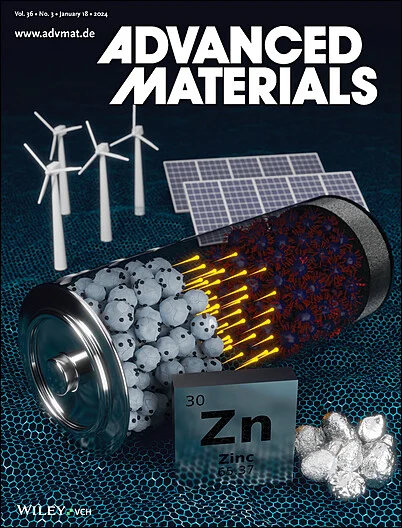Halide Chemistry Boosts All-Solid-State Li-S Batteries
IF 27.4
1区 材料科学
Q1 CHEMISTRY, MULTIDISCIPLINARY
引用次数: 0
Abstract
All-solid-state Li-S batteries (ASSLSBs) are emerging as a promising energy storage solution due to their low cost and high energy density. Their solid-state configuration effectively eliminates the notorious shuttle effect caused by soluble polysulfides in conventional liquid electrolytes. However, the heterogeneous solid-to-solid interfaces introduce significant challenges, including sluggish ion/electron transport and interfacial instability among electrode materials, conductive additives, and solid electrolytes (SEs). Recently, halide-based strategies have gained attention for enabling high-performance ASSLSBs. This perspective highlights these strategies, emphasizing the role of halide chemistry in enhancing ASSLSB kinetics. It is contended that halides (e.g., iodides) in sulfur-based cathode composites—such as Li2S and transition metal sulfides—can activate S/Li2S redox reactions, improving both ionic and electronic conductivities. This “catalytic effect” of halides accelerates the reversible transition, even in the absence of conductive additives like SEs or conductive carbons. Moreover, halides at the anode interface play a crucial role in preventing Li dendrite formation and SE degradation, owing to their large polarizability and high interfacial energy. This perspective provides a timely and insightful summary of halide chemistry's impact on ASSLSB kinetics, offering inspiration for further research and broader adoption of halide-based strategies in next-generation solid-state Li-S batteries.

求助全文
约1分钟内获得全文
求助全文
来源期刊

Advanced Materials
工程技术-材料科学:综合
CiteScore
43.00
自引率
4.10%
发文量
2182
审稿时长
2 months
期刊介绍:
Advanced Materials, one of the world's most prestigious journals and the foundation of the Advanced portfolio, is the home of choice for best-in-class materials science for more than 30 years. Following this fast-growing and interdisciplinary field, we are considering and publishing the most important discoveries on any and all materials from materials scientists, chemists, physicists, engineers as well as health and life scientists and bringing you the latest results and trends in modern materials-related research every week.
 求助内容:
求助内容: 应助结果提醒方式:
应助结果提醒方式:


